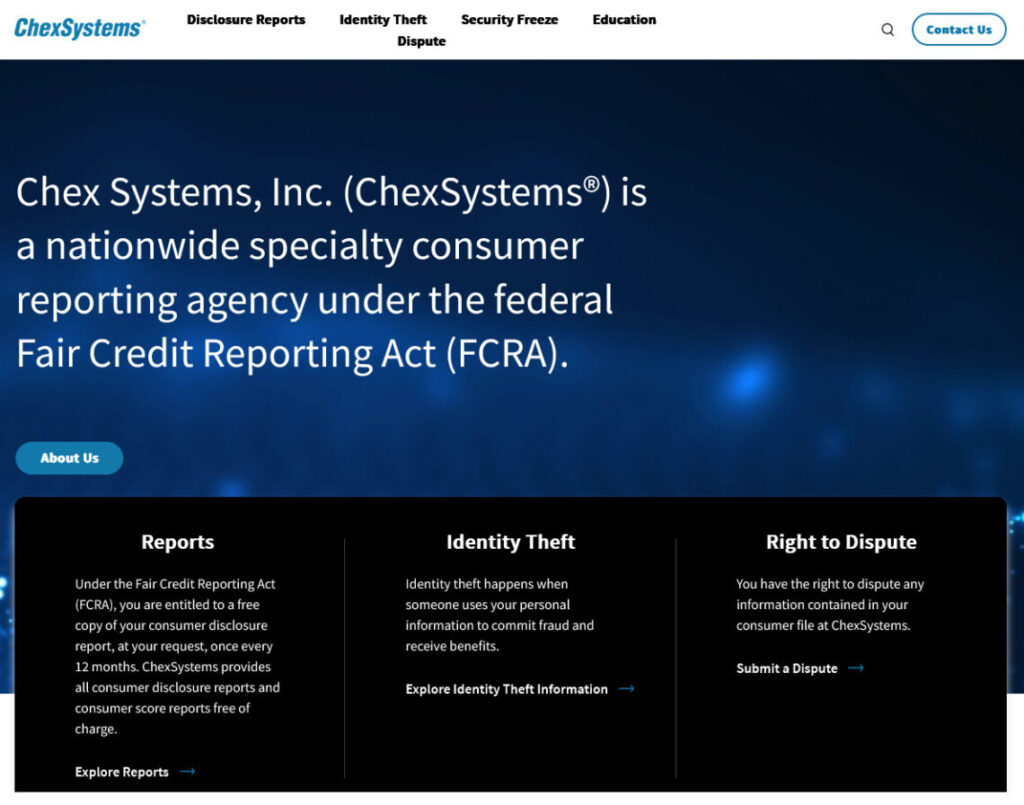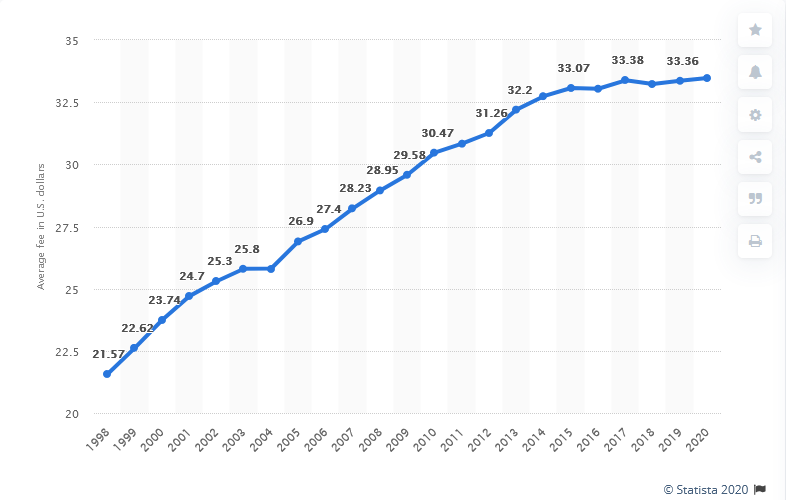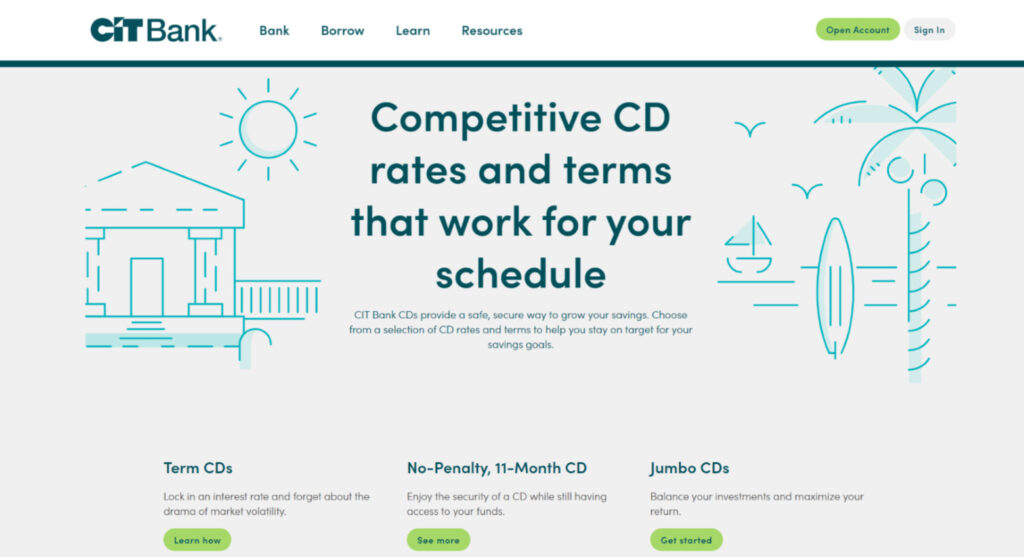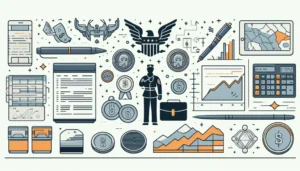Whether you’re just starting to get money in order, understanding the basics of banking and budgeting are life lessons. You’ll need these, along with good spending habits to be on your path to Financial Independence.
We at ChooseFI are dedicated to educating and guiding you every step of the way on your journey to FI. This Ultimate Guide to Banking Basics was created to help you easily learn the fundamental financial tools needed for success.
Banks are more than just a safe place to keep and grow your money. They’re a lifelong tool to help you maintain your overall financial health and live a happier, healthier life. But how do you choose a bank? What type of bank accounts can you and should you open? How much money should you keep in them, and what are some of the benefits and perks available?
In this comprehensive guide, you’ll find links to our best resource to help you understand key financial cornerstones. In addition, learning where to keep your money will give you the knowledge and confidence to make the smartest decisions.
So, let’s jump right into it and begin building this foundation of FI together. Therefore you’ll feel more prepared.
- Banking Basics #1: Banks
- Banking Basics #2: How to Open a Bank Account
- Banking Basics #3: Checking Accounts
- Banking Basics #4: Savings Accounts
- Banking Basics #5: Penalty Fees: What They Are and How to Avoid Them
- Banking Basics #6: Emergency Funds
- Banking Basics #7: Certificates of Deposit
- Banking Basics #8: Money Market Accounts
- Final Thoughts
Banking Basics #1: Banks
Banks, the foundation of the financial system, have existed since the beginning of history. Even before writing was invented in 3500 BC, clay tablets were used to record assets and transactions. Banks, as they exist today, are essential for economic growth both privately and publicly. They store and distribute money, accept deposits, provide loans and lines of credit, and safely keep valuables.
What Are the 3 Main Types of Banks?
There are 3 main types of banks we are going to be referring to throughout this guide:
Traditional Banks
Traditional banks are the oldest brick-and-mortar institutions most are familiar with. They offer a more personalized customer experience over online options. They also have much more available ATM access and branch locations available across the country. Therefore giving you more accessibility to your money.
Online Banks
Online banks, also known as neobanks, have become a boon in the 21st century. Since they first burst onto the scene in 1995, these virtual institutions have revolutionized the basics of banking. Although traditional banks are beginning to invest in their own virtual accessibility, they still trail behind the advanced technology and user experience virtual banks continually pioneer.
Because online banks don’t have a physical presence they are able to offer higher interest rates (as much as 1-2% more) and lower fees than brick-and-mortar banks. That might explain why roughly 77 million Americans either currently have, or are planning to open, an online bank account.
Some of the attractive benefits of online banks are:
- High-yield interest rates
- 24-hour access to your money and services from anywhere in the world
- Low to no fees or required minimum balances
- Almost always FDIC insured (but remember to verify)
- Feature-rich websites and mobile apps
- Quick, easy loan applications
- Pay bills, transfer funds, and deposit checks instantly from your computer or mobile phone
CIT Bank
CIT Bank, one of the largest online banks in the U.S., is a favorite of ours at Choose FI. In addition to their checking and savings accounts with competitive rates and no fees or minimum balance requirements, they’ve been able to keep true to their community-centered core values. Similarly, they have several strong community enrichment programs, continually invest in clean energy initiatives, and help the underserved of their home community in Southern California.
If local branch access isn’t a must-have for you, their 4+ star rated mobile app and website give you access to low-to-no account fees and high rates for checking, savings, and money market accounts. CIT also doesn’t charge for using out-of-network ATMs and refunds $15 a month in fees for banks that may charge you to use their ATM.
You can read our complete review of CIT Bank here or jump right in and open an account here.
Credit Unions
Credit Unions are membership-only financial institutions where members are viewed as equal shareholders. Access to that membership usually comes through a professional connection, career-based affiliation, or particular geographic location.
Like banks, credit unions offer valuable financial tools. Checking and savings accounts, loans, credit cards, ATM access, brick-and-mortar branch locations, and other banking basics for example. Credit unions are also NCUA (National Credit Union Administration) insured, which means they have the same protections as the FDIC.
Another significant differentiating factor of credit unions is that they are non-profit organizations that are more relationship-focused. This is advantageous to credit union members because the organization can offer higher interest rates and lower lending fees.
Banking Basics #2: How to Open a Bank Account
Once you have narrowed down your potential bank shortlist, you can start preparing for the account application process. If you organize all the required information and documents beforehand, the application process shouldn’t take more than a day or two from the application to approval.
How to Open a Bank Account in 8 Steps
- Decide which type of bank (traditional, online, or credit union) best fits your needs for the specific type of account you’re opening.
- Make sure you have a government-issued ID that includes your picture (such as a driver’s license or passport) and your social security number.
- Provide your personal information and financial history
- Double-check all your information for accuracy.
- Sign any required documents
- If necessary, provide an initial funding source for the new account.
- Remember to save copies of all your documents for your own records.
- Once approved, expect to receive your debit card and/or checks in about 7-10 days.
Knowledge is Power: Your Bank Account History
When you’re learning the basics of banking and beginning to build your financial foundation, knowing what personal information banks are potentially looking at is a smart move. If you’re concerned about whether any past banking mistakes or mismanagement may affect your ability to open a new account, consider requesting your ChexSystems report. Much like the major consumer credit bureaus that collect your credit history information, ChexSystems is a consumer reporting agency that compiles and keeps your bank account history.

Request your FREE annual ChexSystems report here.
Taking advantage of your free annual consumer reports allows you to keep on top of your overall financial health. Checking for errors and regularly evaluating any updated information for inaccuracies will help keep you in control of your finances.
Banking Basics #3: Checking Accounts
Making the decision to redirect your focus towards financial independence and a happier, healthier life starts with ensuring that your money’s safe and begins to work for you. Whether you are starting or restarting your path to Financial Independence, understanding the basics of banking, like checking and savings accounts is crucial to the creation of a solid foundation.
What is a checking account, and why should you have one?
If you’re just now learning banking basics, checking accounts are probably the most familiar banking term. A checking account is a type of basic bank account that allows you easy access to your money by either withdrawals or deposits.
Firstly, they simplify and organize your financial world by creating an essential hub for your money on your path to financial independence and freedom. You can open accounts online, at a traditional brick-and-mortar bank, or around the corner at your local credit union. You will use your checking account to pay bills, make everyday purchases, receive money from family or friends, and have your paycheck, tax refunds, and other benefits directly deposited into your account.
What are the benefits of opening a checking account?
There are 5 key benefits of keeping your cash in a basic banking check account we want to highlight:
1. Overall Safety and Protection
Checking accounts offer significant protection for your money. They’re safer to use than cash because checks and debit cards come with the inherent safety provided by the bank that issued them to you. For example, if you were to lose your debit card or someone were to steal your card information and make fraudulent purchases, you are protected from liability by your bank. Learning to protect yourself is one of the most important basics of banking you can master.
2. Powerful Money Management and Budgeting Tools
The best banks will offer money management and budgeting tools to help their customers successfully manage their money. They’re such standard banking basics these days that they are now considered a fairly common feature. Whether it be a robust app like Mint, additional online functionality directly on your bank’s website, or our own ChooseFI Expense Tracker, keeping on top of your finances and maintaining an accurate budget has never been easier.
Dive deeper into budgeting tools: 7 of the Best Personal Finance Tools to Help You Control Your Money
3. Establishment of a Financial History
Establishing and maintaining a checking account can help you build a relationship and a positive financial history with your financial institution. Your checking account management could become a factor the institution weighs when deciding if they will extend you a future loan or line credit. Mastering the basics of banking will help you create the responsible and attractive financial history that banks look for.
4. Significantly Lower Costs
Keeping your money in a checking account is much less expensive than using alternatives like money orders, prepaid cards, check-cashing services (please stay far away from these), and wire services. Banks and financial institutions don’t charge you a fee or penalize you for accessing your own money.
5. Convenience
Checking accounts are convenient because you have quick and easy access to withdrawing your money as well as receiving it. You also can pay your bills in real-time or take advantage of automated draft options to ensure you never have to pay another late fee again.
Types of Checking Accounts
There are four main types of checking accounts when discussing the basics of banking:
Traditional Accounts
These are the most common, no-frills checking accounts available, as well as the easiest to open. However, you will almost always get access to 24/7 online and mobile banking, unlimited debit card transactions, and can write an unlimited number of checks.
Interest Bearing Accounts
This type of checking account offers a rate of return on your balance. While most banks offer an interest-bearing checking account option, traditional banks typically offer the most minimal rate of return. The highest interest rates are typically offered by online banks. The mention of an interest-bearing checking account might initially catch your eye. However, the minimum rate of return on your balance will quickly reveal how little value there is to be found in this type of account.
Reward Accounts
A reward checking account is sometimes referred to or considered a type of interest-bearing checking account. Reward accounts allow you to earn cashback for purchases made with your debit card and earn interest on your account balance. Some basic banking reward accounts with limited ATM locations will also offer reimbursement of out-of-network ATM fees.
Student Accounts
Many people start the banking basics education when they open their first student checking account. Typically, student accounts do not have minimum balance requirements and will offer low or no fees. Essentially, banks court young adults with attractive offers and perks in an attempt to turn them into lifelong customers. Initially offering those types of bonuses, as well as easier access to low/no-cost checking accounts, are cost-effective ways for banks to develop a future generation of loyal account holders. Keep that in mind when choosing a bank to open this type of beginner checking account with.
Eventually, you’ll transition out of a student checking account. If you were initially mindful to evaluate and consider the benefits of a bank’s more advanced accounts – you’d lessen the possibility you will want or need to experience the hassle of changing banks entirely.
Business Accounts
If you own a business or have a side hustle, you should consider keeping your personal and business funds separate for the following reasons:
- A clean and accurate set of books – important for quarterly and annual tax accounting at the state and federal levels.
- Establish the paper trail to show that your business is not just a hobby. This is especially useful if you see a net operating loss in a given year, and use that loss to lower the total income you report to the tax authorities.
If a business account sounds like a good idea, see if the following checking account offers make sense for your business. You may even earn a cash bonus!
The Bottom Line
Checking accounts are the cornerstone of your financial health. Not only do you begin your personal financial journey by opening a checking account, but you also begin to establish a financial identity by being responsible for your debits and credits.
Banking Basics #4: Savings Accounts
What is a savings account and why should you have one?
Savings accounts are useful financial tools to help create structure and balance for your financial well-being. They can be a great asset in separating your expendable income from the money you want to build and grow your emergency fund with. Savings accounts are common banking basics that are usually opened in conjunction with checking accounts, as they naturally create a balance between the two: checking accounts contain the money you are willing to spend, and savings accounts contain the money you want to save.
Pros of Savings Accounts
- Helps you budget effectively for the future
- Offers a rate of return on your savings balance
- Can be used as overdraft protection by some financial institutions
Cons of Savings Accounts
- Lower-yield savings accounts may not seem “worth it”
- There could be limitations (and therefore fees) if your balance falls below a threshold
- Transfers from savings accounts may not have a fast turnaround (cash access limitations)
Types of Savings Accounts
There are 4 main types of savings accounts you’ll see on your banking basics journey.
Traditional Savings Accounts
These are the most common, no-frills savings accounts available.
Certificates of Deposit
A CD is a type of savings investment at a face value with a guaranteed APY.
If you don’t need immediate access to your money in the short term, stashing your cash in a high-interest-rate CD can earn more money than letting dollars sit in a traditional savings account.
Jump down to our in-depth explanation and learn more about CDs here.
Money Market Accounts
MMAs are accounts with higher yields than traditional savings accounts but with tighter government regulations. Money market accounts give you a bit of the best of both worlds. They allow you to earn interest on your savings while allowing you to access them. Rates are typically better than regular savings accounts. You may also be able to write checks from your account or access funds with an ATM or debit card.
Jump down to our in-depth explanation and learn more about money market accounts here.
Specialty Savings Accounts
HSAs, Education (529), and Traditional and Roth IRAs are all considered specialty savings accounts. Therefore, as you continue to move forward to more advanced financial strategies, you’ll use these types of accounts to learn how to make your money work for you.
Dive deeper into specialty savings accounts below:
The Triple Tax Benefits Of The HSA
529 College Savings Plan: What You Need to Know
How And Why To Set Up A Roth IRA Conversion Ladder
Savings Account Interest: Simple vs Compound
Simple Interest
Simple interest considers only your initial deposit for determining your rate of return. For example, $100 with a 3% interest rate invested over two years in a simple interest account will yield a $6.00 return – or $3.00 per year.
Compound Interest
Compound interest considers your initial deposit plus any interest accumulated at the end of each year to determine your rate of return. For example, $100 with a 3% interest rate invested over two years in a compound interest account will yield a $6.09 return – $3.00 the first year, and $3.09 the second year.
Listen to more on compound interest and why it’s often referred to as the “8th wonder of the world” here:
The Bottom Line
Savings accounts are the simplest and most effective financial tools for moving toward financial freedom. You earn a marginal return, but more importantly, you show the financial world you can be fiscally responsible.
A ChooseFI Community Favorite: M1 Save – High Yield Savings Account
Banking Basics #5: Penalty Fees: What They Are and How to Avoid Them
Overdraft Fees
With the average bank overdraft fee averaging $30.82 in late 2023, a bank’s fee schedule is essential to consider. This enormous additional revenue stream for banks pulls in billions of dollars in overdraft fees from consumers each year. So, be sure to pay attention to an institution’s fee schedule before opening an account to understand the total financial cost of doing business with them.
2024 Update: The Biden administration has proposed a rule that could drop banking overdraft fees to as little as $3. This move would eliminate billions in revenue for the banking industry, so we expect this battle to unfold in the news headlines in the first half of this year.

Returned Check and NSF (Non-Sufficient Funds) Fees
If you’ve not taken the time to set up overdraft protection, and your account goes into the negative, you will likely be penalized with a hefty fee. This costly error net banks billions of dollars a year. These penalties can quickly add up if left unchecked and potentially cause financial ruin.
Staying on top of your daily purchases and account balances will help you steer clear of this common yet easily avoidable banking basics pitfall. Keeping an accurate ledger can save you hundreds of dollars a year. Be sure you record purchases and reoccurring payments promptly to track your resulting end balance accurately. Not doing so could turn your $3 coffee into a $30 coffee – overnight.
ATM Fees
Banks can also sneak in extra fees by penalizing you for using an out-of-network ATM. Be sure to plan ahead when traveling or in an area with no in-network ATM available. It may seem like an obvious precaution, but you would be surprised how often people make this mistake and end up spending $100 or more a year on easily avoidable fees like these.
Account Balance Fees
Some banks may charge you a fee if you fall below a set minimum balance. So, be sure to keep enough cash in your account to stay above this threshold.
Avoiding these extra fees will help stabilize your financial trajectory and help you consistently grow your FI number. Remember: every penny counts, and count every penny.
Overdraft Protection
Traditional banks, online banks, and credit unions all offer you the option of linking a backup source of funding to your checking account to help prevent incurring costly penalty fees. That source of funding, called overdraft protection, can come from your savings account, an alternative checking account, or a credit card.
Overdraft protection prevents your checking account balance from falling below zero, being hit with a non-sufficient fund fee (NSF), and your transaction being declined by a merchant. In some cases, your situation can go from bad to worse if the merchant also charges you a penalty fee for the failed transaction. A single accidental $18 account overdraft can end up costing you more than $75 in some cases. Overdraft protection is one of the more important basics of banking that can save you from incredible frustration and devastating fees.
The Bottom Line
Penalty fees, far and away, are the easiest ways for banks to make money. However, they are just as easy to avoid if you plan ahead. Always be sure you know where your in-network ATMs are. If you plan on traveling, ensure you have your debit card, cash, or traveler’s checks on hand. Therefore, knowing your bank’s fee schedule will help prevent any unnecessary fees to your account as well.
Banking Basics #6: Emergency Funds
An emergency fund is…well… precisely that. A separate savings source solely for an extreme emergency, not a minor emergency expense. Having that money close at hand means you can afford to cover any crisis that comes your way. Let’s explore what you need to know about the vital tools of banking basics, what it’s for, why you need one, how much money you should have in it, what NOT to do with it, and the best places to keep and grow it.
What is an Emergency Fund?
An emergency fund is an amount of money you keep in an easily accessible place in the event of an unexpected financial expense related to:
- You or a family member’s health
- A sudden loss of income from reduced salary or job loss
- Home repairs
- Major car repairs
Your emergency fund should be kept somewhere it earns a healthy rate of return to grow its value over time. A good rule of thumb is to keep anywhere from 3 to 6 months of living expenses in an account you do not touch unless an emergency occurs.
Learn everything you need to know about emergency funds right here:
Emergency Funds 101: The Ultimate Guide to Emergency Funds
How much money should an emergency fund have?
At the very minimum, you should have at least $1000 tucked away. Ideally, your goal should be to put aside 3 to 6 months of your salary or monthly living costs for a healthy emergency fund.
For example, if you’re going to need $3,000 a month to cover all your required expenses, your goal should be to save a total of $18,000 just for your emergency fund. If you wanted to start on the small end of the emergency fund, you’d need $9,000.
For many, the thought of committing that much cash to an emergency fund can feel unrealistic when starting your FI journey. But if you utilize an account that offers a high rate of return on your money, you’ll be able to attain a sizeable financial buffer to help you through even the most difficult of times.
Dive deeper into the $1000 Emergency Fund and learn how to build yours here.
Zero to Emergency Fund
There may be some of you who are starting from zero and wondering how to start saving if you’re currently stuck in the paycheck-to-paycheck cycle. Don’t worry, we’ve got you covered – start with the links below:
How to Quit Living Paycheck-to-Paycheck
Free Financial Independence Made Simple eBook
Finding ways to either save or earn your way to that first $1000 emergency fund goal isn’t as difficult as you might initially think. So be sure to check out the video below to learn how to quickly make $1000 with The $1000 Challenge, and discover our best blog resources to help you create (or recreate) your emergency fund and quickly build it up:
Dive deeper into emergency funds:
Emergency Funds 101: The Ultimate Guide to Emergency Funds
How to Start Building Your Emergency Fund
How to Rebuild Your Emergency Fund
Financial Basics: Spend Less Than You Make
$1000 Emergency Fund: Why You Need One And How to Build It Fast
Where should you keep an emergency fund?
You will need to put a lot of consideration into where you decide to put your emergency fund. The ability to access it without incurring penalties and fees is key. Look for options that have either low or no penalties for withdrawing your money. The good news is that there are plenty of traditional and non-traditional places to keep and grow your emergency fund. Read on to learn a few of our favorites.
High Yield Savings Accounts
High-yield online savings accounts usually offer a relatively high APY in comparison to their traditional counterparts. Oftentimes, you’ll find that these accounts pay from 10x to 20x more than traditional brick-and-mortar banks. They also provide easy access to your funds should you need to get to them quickly and from anywhere in the world.
Here are a few FI community favorites:
CIT Bank Review: High Interest Rate Options
M1 Finance and Emergency Funds
M1 Finance is an unconventional yet highly effective option when considering where to keep your emergency fund. In a nutshell, M1 Finance is a user-friendly micro-investing app that is a kind of robo-advisor/brokerage hybrid. You can dig into the full review here.
If you are an M1 customer, you can borrow against your investment portfolio with an M1 Margin Loan or an M1 Personal Loan.
M1’s Margin Loans allow you to borrow up to 40% of your portfolio’s value at some of the lowest rates on the market with M1 Plus. Margin loans are connected to margin accounts, taxable brokerage accounts that give you financial leverage. This type of lending is flexible and does not affect your credit score.
M1 Personal Loans offer fixed-rate loans from $2,500 to $50,000 without collateral.

Read our full review of M1 Finance here
Get started with M1 Finance here.
Check out the full M1 Finance Review video below:
HELOCs and Emergency Funds
A HELOC, also known as a Home Equity Line of Credit, is a revolving line of credit that uses your home as the loan collateral. Typically, you need to have at least 20% equity in your home before qualifying for a HELOC. Above all, the bank sets your credit limit based on the amount of equity that you have.
In the case of an actual emergency, which we defined above, you can borrow from your HELOC using a credit card or check that is connected to it. Because a HELOC is a line of credit, you can pay back the amount borrowed with payments based on the actual dollar amount you borrowed – not the total amount that may be available to you.
What makes a HELOC an attractive emergency fund option is its comparatively low-interest rates compared to credit cards. Based on the borrower, the average HELOC rate can start around 2.99% and go up to about 21%. Banks consider your debt-to-income ratio, the amount of equity you have in your home, current interest rates, and your credit score to calculate your rate.
Keep in mind that borrowing from a HELOC puts your home at risk if you are late or default on repayment. Additionally, if you sell your home, most HELOC repayment plans require you to pay the line of credit off at the same time.
The Differences Between a HELOC and a Home Equity Loan
There are four major differences between a Home Equity Line of Credit (HELOC) and a Home Equity Loan that you should be aware of. While both use your home as collateral to borrow funds that you can use however you wish, there are key differences in the loan terms, interest rates, how you access those funds, and how repayment works.
- Home Equity Loans are disbursed in a lump sum, but with a HELOC, you can access and withdraw the funds as needed.
- A typical Home Equity Loan term is 60 months, while a HELOC has a 10-year draw period. Each advance is repaid over 15 years.
- Home Equity Loans typically have fixed interest rates, while HELOCs traditionally have variable rates. However, more banks are beginning to offer fixed-rate options.
- When you repay Home Equity Loans, your monthly payments stay the same for the life of the loan. However, when you repay HELOCs, you only pay the balance you owe, and your monthly payment can fluctuate.
Check out podcast episode 261, where the guys explain the basics about what a HELOC is:
[fusebox_track_player url=”https://dts.podtrac.com/redirect.mp3/chtbl.com/track/DD815/adbarker.com/stream/FUtw8akGsdUcxjeJU7HY5o1V/traffic.libsyn.com/secure/choosefi/261_Golden_Sunset.mp3″ social_email=”true” ]
How to Take Out a HELOC in 8 Steps
- Gather all your financial information and documents
- Thoroughly review your finances to determine your home equity
- Shop around for lenders to find the best rate
- Submit your application to the lender
- Review all disclosures and documents
- Complete the underwriting process
- Sign the closing paperwork
- Access the line of credit
The Bottom Line
Emergency funds are the resources you need when you face unexpected financial woes that can’t be covered by your standard liquid assets. They are a safety net from the “slippery slope” of borrowing money at high APRs, which can quickly snowball into an uncontrollable financial avalanche.
Banking Basics #7: Certificates of Deposit
What is a certificate of deposit or CD?
A certificate of deposit is one of the more popular savings vehicles discussed when learning the basics of banking. Like a traditional savings account, a CD is considered low-risk and typically has a higher interest rate. The most significant difference between the two is that a CD is a lump sum with a maturity date “locked in” by the financial institution. Because you agree to this maturity date time frame, you receive a higher interest rate than you would receive if you decided to put money into a traditional savings account.
It is important to remember that when you invest in a CD, your deposit (and interest) cannot be touched throughout the maturity period (which can range from 6 months to 5 years). So, only invest in a CD if you can afford to lock away your cash. The upside to locking in a CD for an extended period is that financial institutions offer higher interest rates for longer maturity dates.
To open a CD, you can visit your local financial institution (in-person or online), and they will provide you with a disclosure statement detailing maturity dates and interest rate options. Remember, to ensure you’re taking advantage of the best rates possible, make a point of exploring options and rates at several other banks as well. You can then make an educated decision regarding the balance between the maturity date (how long you are willing to allow your money to be locked in) and rate of return (how much money you will earn in exchange for that time) that makes the most sense for your savings goal.
Types of CDs
While there are quite a few different types of CDs, traditional CDs are the easiest to open and most popular among consumers. Standard maturity dates for CDs are 6, 12, 24, 36, 48, and 60 months. So, the longer you are willing to “lock in” your money, the higher the interest rate will be.
Traditional CDs
However, if you value the ability to speak face-to-face with easily accessible financial advisors offered at traditional banks, you may find the management of online CDs to be lacking in personalized customer support.
Online CDs
An online CD typically offers a higher APY and lower fees than a traditional CD. Without the overhead and operational costs of a traditional bank, online banks are able to provide more lucrative rates than brick-and-mortar institutions.
High Yield CDs
High Yield CDs offer the highest interest rates and, compared to traditional CDs, a lower “buy-in” across the board.
Most High Yield CDs are offered by online financial institutions; however, some credit unions and traditional banks can be pretty competitive. Therefore, it is best practice to shop around to find the CD that fits your desired financial goal(s).
CD Ladders
A CD ladder is an investment strategy that utilizes different maturity dates for higher rates of return. In addition, it diversifies and spreads out available liquid cash to best suit your financial goals.
For example, instead of sinking a $5,000 investment into a 5-year CD, you can spread your seed investment over a 1-year, 2-year, 3-year, 4-year, and 5-year CD ($1,000 each). Although you won’t receive the biggest “bang for your buck,” you’ll enjoy more flexibility with the options to reinvest after the first year (second year, etc.) and still receive a solid return on investment.
CD ladders are perfect for money that you likely won’t use and carry an inherently low risk. For example, if you like to have a large emergency fund, you may not want the entire investment to earn the low rates of a standard savings account. Therefore, you could keep half in a traditional savings account and half in a CD ladder. That way, you can access a stash of cash penalty-free until your CD matures.
You can set up a CD ladder with any financial institution that offers them. We happen to be partial to CIT Bank because they offer reasonable rates and an emergency fund-friendly 11-month penalty-free CD. They offer nine different CD products from six months to five years, each offering a solid APY.
Learn more about a CIT Bank CD Ladder here.

Learn more about how to build a CD Ladder here.
The Bottom Line
Be sure to have an emergency fund in place before deciding to invest in CDs. Remember, you are sacrificing accessibility to your investment for a higher rate of return. “Cashing” a CD out early will cause you to lose money through penalties and other fees. It is also best practice to have a savings account with a comfortable balance before venturing into CD investments.
Banking Basics #8: Money Market Accounts
Modern money market accounts are similar to savings and checking accounts but have some crucial differences. Money market accounts typically offer a marginally higher rate of return than standard savings accounts. However, each institution is different, so thoroughly research before committing to this type of account. You may also write checks and take ATM withdrawals from a money market account as a convenience (as you are limited to 6 transactions per calendar month).
Pros of Money Market Accounts:
- Higher rates of return than standard savings accounts
- FDIC protection (up to $250,000)
- With proper research, it can yield a high return with little to no monthly fees
Cons of Money Market Accounts:
- A 6 transaction limit per account per calendar month
- It may require a significant “buy-in” (a sizeable upfront seed investment)
- Could be taxable at much higher rates than savings accounts
The Bottom Line
Consider investing in banking basics like money market accounts only after establishing your emergency fund and some diversity in conservative investments (like CDs). So, keep in mind that there could be little to no difference in a financial institution’s rate of return between Money Market Accounts and Savings Accounts. Research is truly your friend in this arena.
Final Thoughts
Now that you have a solid understanding of the basics of personal banking, you are well-equipped to make better decisions to strengthen your overall financial portfolio.



